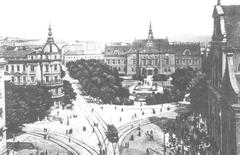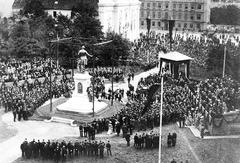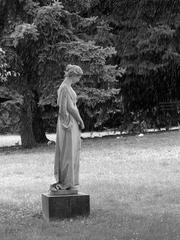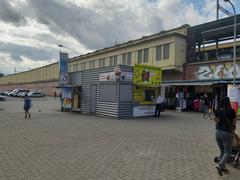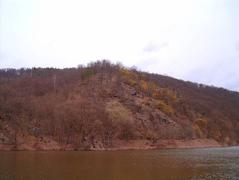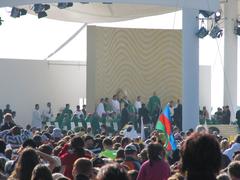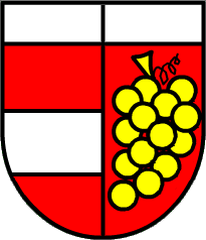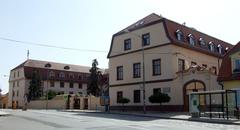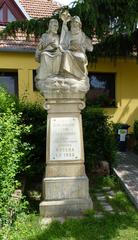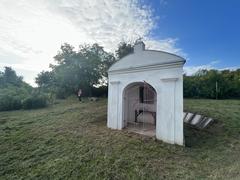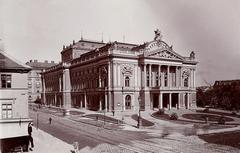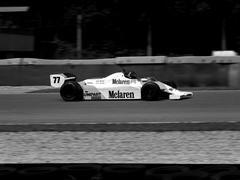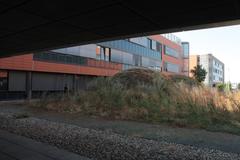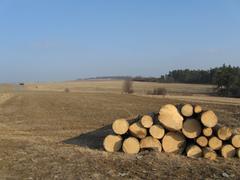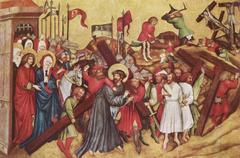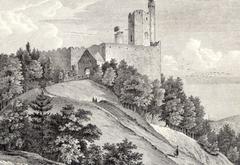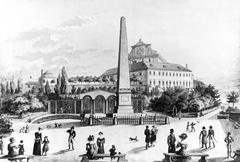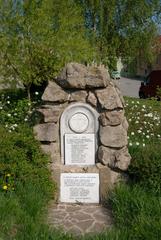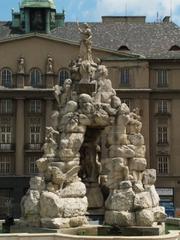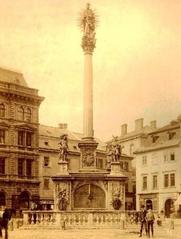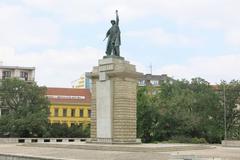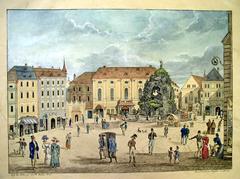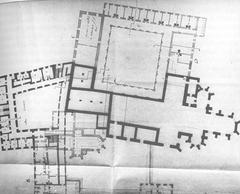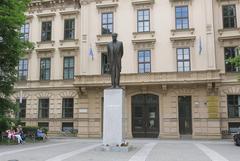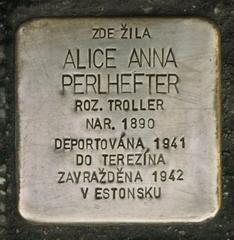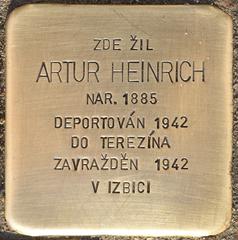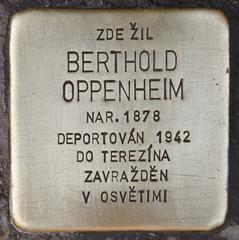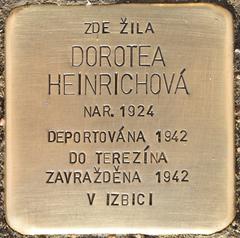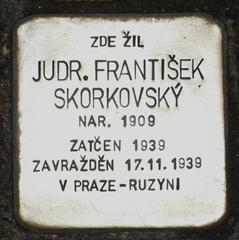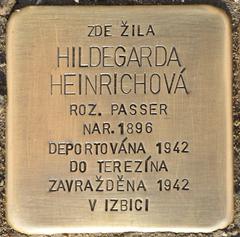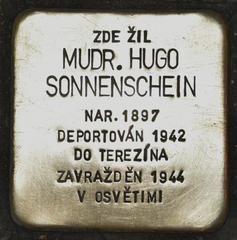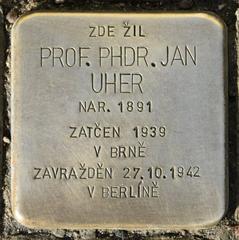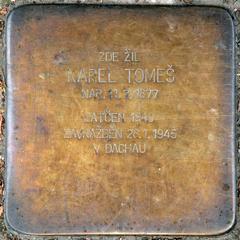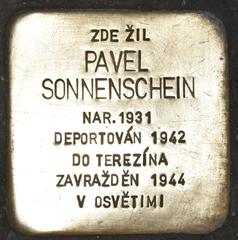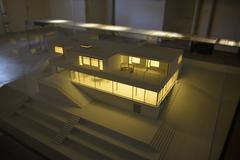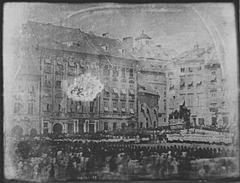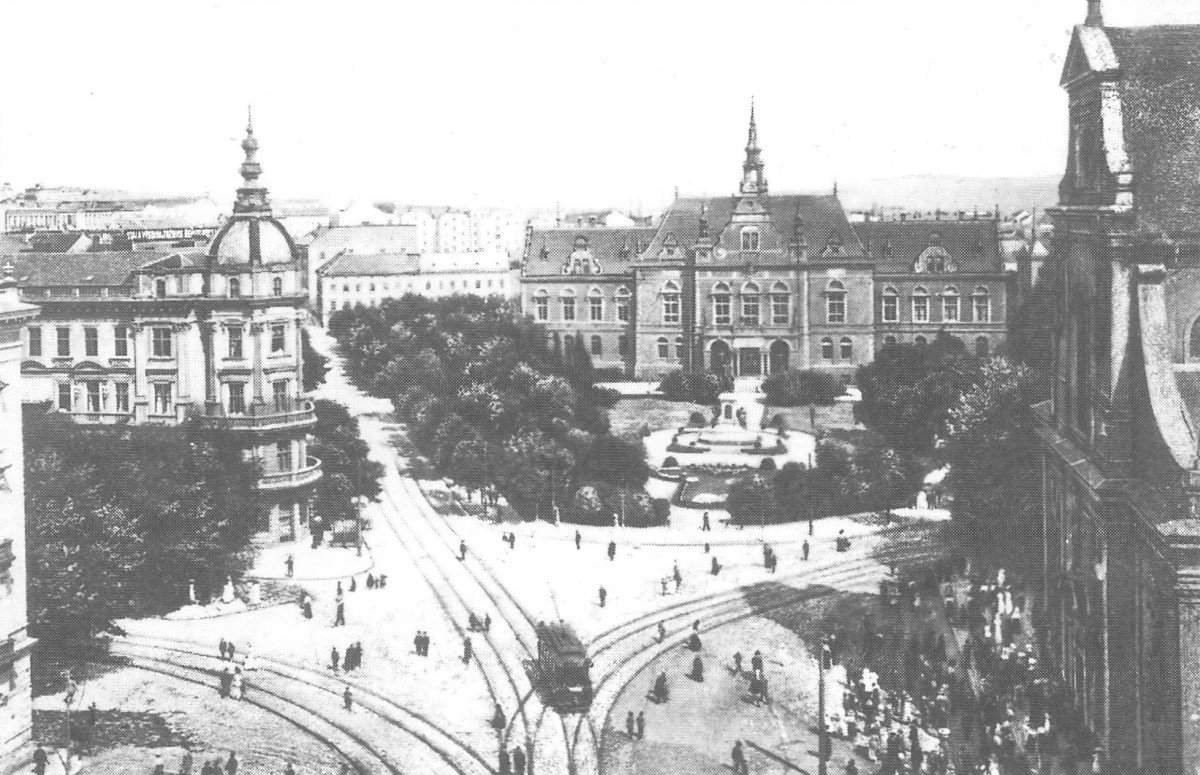
Comprehensive Guide to Visiting Moravské náměstí, Brno, Czech Republic
Date: 19/07/2024
Introduction
Moravské náměstí, also known as Moravian Square, is a cornerstone of Brno’s vibrant cultural and historical landscape. Situated in the heart of the Czech Republic’s second-largest city, this square has evolved from its medieval origins into a bustling hub of social, architectural, and cultural significance. Moravské náměstí’s rich history is mirrored in its eclectic architecture, ranging from medieval fortifications to modernist structures, making it a must-visit for history buffs, architecture enthusiasts, and casual tourists alike. The square is not just a historical landmark but also a living, breathing space that hosts numerous public events, festivals, and social gatherings year-round. Whether you’re wandering through the serene park, marveling at the statue of Jobst of Moravia, or exploring nearby attractions like the Moravian Gallery and the Church of St. Thomas, Moravské náměstí offers a multifaceted experience that captures the essence of Brno (Brno City Website, Moravian Museum).
Table of Contents
- Introduction
- Historical Background
- Visitor Information
- Nearby Attractions and Accessibility
- Cultural and Social Significance
- Preservation and Future Prospects
- FAQ
- Conclusion
Exploring Moravské náměstí, Brno
Historical Background
Early History and Establishment
Moravské náměstí’s origins date back to the medieval period when Brno was a burgeoning trade hub. Initially part of the city’s fortifications, the area served as a strategic point for defense and trade. The square began to take its current form in the 19th century, following the demolition of the city walls and subsequent urban expansion.
19th Century Developments
The 19th century was a transformative period for Moravské náměstí. One of the most notable developments was the reconstruction of the Church of St. Thomas, originally built in the 14th century and later modified in the Baroque style in the 17th century. This period also saw the establishment of several important institutions around the square, including the Moravian Museum, founded in 1817 (Moravian Museum).
20th Century Transformations
The 20th century brought significant changes to Moravské náměstí, reflecting broader historical and political shifts. During the First Czechoslovak Republic (1918-1938), the square became a focal point for public gatherings and political demonstrations. The interwar period saw the construction of several modernist buildings, contributing to the square’s eclectic architectural landscape. The Nazi occupation during World War II and the subsequent Communist era also left their marks on the square.
Post-Communist Era and Modern Developments
The Velvet Revolution of 1989 marked the end of Communist rule in Czechoslovakia, ushering in a new era for Moravské náměstí. Recent years have seen significant urban renewal projects aimed at revitalizing the area and preserving its historical heritage. The statue of Jobst of Moravia, unveiled in 2015, stands as a testament to the square’s rich historical legacy (Statue of Jobst of Moravia).
Visitor Information
Ticket Prices and Opening Hours
Visitors to Moravské náměstí can explore the square and its surrounding attractions for free. The square is open to the public 24/7, but individual landmarks such as the Moravian Museum and the Moravian Gallery have specific visiting hours and may require tickets for entry. For the latest information on ticket prices and opening hours, please visit their official websites (Moravian Museum, Moravian Gallery).
Travel Tips
Moravské náměstí is easily accessible by public transport, with several tram and bus lines stopping nearby. For those driving, parking facilities are available in the vicinity. The square is pedestrian-friendly and provides ample seating areas, making it an ideal spot for a leisurely visit. Don’t forget to bring a camera to capture the beautiful architecture and historic landmarks.
Nearby Attractions and Accessibility
In addition to Moravské náměstí, visitors can explore several nearby attractions in Brno. The Špilberk Castle, Brno Cathedral, and the Old Town Hall are all within walking distance and offer deeper insights into the city’s rich history. The area is well-connected by public transport, making it easy to explore other parts of the city.
Cultural and Social Significance
Moravské náměstí has long been a center of cultural and social life in Brno. The square hosts numerous public events, including festivals, markets, and concerts, making it a vibrant gathering place for both locals and tourists. The annual Christmas market held in the square is particularly popular, attracting visitors with its festive atmosphere and traditional Czech crafts and foods.
The square’s cultural significance is also reflected in its public artworks and monuments. In addition to the statue of Jobst of Moravia, the square features several other notable sculptures, including the Monument to the Red Army, which commemorates the Soviet soldiers who liberated Brno during World War II. These monuments serve as important reminders of the city’s complex history and its connections to broader historical events.
Preservation and Future Prospects
Efforts to preserve and enhance Moravské náměstí continue to be a priority for the city of Brno. Recent urban renewal projects have focused on improving the square’s infrastructure and public spaces while maintaining its historical character. These initiatives aim to make the square more accessible and enjoyable for residents and visitors alike.
Looking to the future, Moravské náměstí is poised to remain a central and dynamic part of Brno’s urban landscape. The square’s rich historical legacy, combined with ongoing efforts to promote cultural and social activities, ensures that it will continue to be a vital and cherished public space for generations to come.
FAQ
Q: What are the visiting hours for Moravské náměstí?
A: Moravské náměstí is open to the public 24/7, but individual landmarks such as the Moravian Museum and the Moravian Gallery have specific visiting hours.
Q: Is there an entry fee to visit Moravské náměstí?
A: Visiting Moravské náměstí is free. However, some surrounding attractions may have entry fees.
Q: How can I get to Moravské náměstí?
A: The square is easily accessible by public transport, with several tram and bus lines stopping nearby. Parking facilities are also available for those driving.
Q: What are some nearby attractions?
A: Nearby attractions include the Špilberk Castle, Brno Cathedral, and the Old Town Hall.
Stay updated by following the official Brno city website or downloading the mobile app Audiala for more information on events and attractions in Brno.
Conclusion
In summary, Moravské náměstí stands as a testament to Brno’s rich and complex history, seamlessly blending the old with the new. From its origins as a medieval trade hub to its current status as a cultural epicenter, the square has continually adapted to meet the needs of its residents and visitors. The architectural grandeur of landmarks like the Church of St. Thomas and the modernist buildings from the interwar period provide a visual feast, while the various cultural events and public artworks add a dynamic layer to the square’s significance. Efforts to preserve and enhance Moravské náměstí ensure that it remains a cherished public space, poised to continue its legacy for future generations. Whether you’re visiting for its historical landmarks, cultural events, or simply to enjoy a leisurely day in the park, Moravské náměstí offers a unique and enriching experience (Moravian Gallery, Velvet Revolution).
For more detailed information and to plan your visit, download our mobile app Audiala, where you can find interactive maps, virtual tours, and up-to-date event information.
References
- Exploring Moravské náměstí, Brno - History, Visiting Hours, and Tickets, 2023, Author https://www.brno.cz/en/
- Visiting Moravské náměstí - History, Tickets, and Tips for Brno’s Iconic Square, 2023, Author https://www.moravska-galerie.cz/en/
- Explore Moravské náměstí in Brno - Visiting Hours, Tickets, and Top Attractions, 2023, Author https://www.zamek-brno.cz/en/
- Velvet Revolution, 2023, Encyclopaedia Britannica https://www.britannica.com/event/Velvet-Revolution
